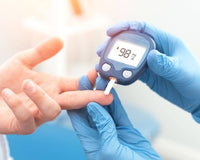Celecoxib Warnings, Uses, Side Effects, and Dosage
Celecoxib is a non-steroidal belonging to a class of drugs known as COX-2 inhibitors. It can be used to relieve swelling, pain, and tenderness caused by a variety of conditions. In this article we discuss the side effects, uses, and dosage of celecoxib. We also answer the questions what is celecoxib and how does it work?
Celecoxib Warnings
Celecoxib comes with a number of warnings which may increase or worsen symptoms. Ask your doctor about these warnings before taking celecoxib.
Heart Problems Warning
Taking celecoxib can cause heart problems. Consult your doctor immediately if you experience any of the following:
- Chest pain
- Tightness in the chest
- Irregular heartbeat
- Unusual warmth of the skin
Anaphylaxis Warning
Celecoxib can cause a serious allergic reaction called anaphylaxis. Call your doctor right away if you experience any of the following:
- Rash
- Itching
- Trouble breathing or swallowing
- Swelling of the hands, face, or mouth
What is Celecoxib?
Celecoxib is a non-steroidal anti-inflammatory drug (NSAID). It belongs to a class of NSAIDs known as COX-2 inhibitors. It can be used to relieve pain, swelling, and tenderness caused by osteoarthritis, rheumatoid arthritis, and ankylosing spondylitis.
How Does Celecoxib Work?
Celecoxib works by stopping the body’s production of the enzyme that makes prostaglandins, lipids involved with dealing with injuries and illnesses. By reducing the production of prostaglandins, celecoxib helps reduce inflammation, pain, fever, swelling, and tenderness from injuries.
What is Celecoxib Used For?
Celecoxib is used to relieve pain, tenderness, and swelling caused by osteoarthritis, rheumatoid arthritis, and ankylosing spondylitis.
It can also be useful in treating juvenile rheumatoid arthritis in children ages 2 and older. Celecoxib may also be helpful in treating painful menstrual periods and relieving short-term pain caused by surgery, injury, and medical or dental procedures.
Celecoxib is also sometimes used in conjunction with surgery and other treatments to reduce the number of polyps in the colon and rectum in patients with familial adenomatous polyposis, a condition which may cause cancer.
Celecoxib Dosage
Celecoxib comes as a tablet and oral solution. It is important to take celecoxib under the supervision of a healthcare professional. Your dosage of celecoxib may depend on a number of things including:
- Your age
- Your weight
- How severe your condition is
- Strength of celecoxib
- Number of doses per day
Oral Dosage Capsules and Solution
Dosage of oral capsules and solution of celecoxib for the following conditions is as follows.
For Acute Pain or Pain During Menstruation:
- Adults: At first 400mg. A second dose of 200mg can be taken if needed on the first day. Then 200mg twice a day as needed.
- Children: Use and dosage must be determined by your doctor.
For Ankylosing Spondylitis or Osteoarthritis:
- Adults: 200mg once a day or 100mg twice a day. Your doctor may increase dose if needed.
- Children 2 years and older and weighing more than 25kg: 100mg twice a day.
- Children 2 years and older and weighing less than 25kg: 50mg twice a day.
- Children younger than 2: Use and dosage must be determined by your doctor.
For Rheumatoid Arthritis or Juvenile Rheumatoid Arthritis:
- Adults: 100 to 200 mg twice a day.
- Children 2 years and older and weighing more than 25kg: 100mg twice a day.
- Children 2 years and older and weighing less than 25kg: 50mg twice a day.
- Children younger than 2: Use and dosage must be determined by your doctor.
Oral Dose Form Solution:
Celecoxib is also available as an oral solution.
For Acute Migraines:
Adults: 120mg once a day.
Children: Use and dose should be determined by doctor.
Side Effects of Celecoxib
Celecoxib does have potential side effects, some of which are more serious than others.
Common Side Effects
Common side effects of celecoxib include:
- Gas or bloating
- Sore throat
- Cold symptoms
- Nausea
- Dizziness
- Constipation
- Dysgeusia
Serious Side Effects
Contact your doctor right away if you experience any of the following symptoms. More serious side effects of celecoxib may include:
- Shortness of breath
- Unexplained weight gain
- Excessive tiredness
- Unusual bleeding or bruising
- Itching
- Lack of energy
- Pain in the upper right part of the stomach
- Yellowing of the skin or eyes
- Blisters
- Fever
- Rash
- Hives
- Hoarseness
- Pale skin
- Difficulty swallowing or breathing
- Back pain
- Fast heartbeat
- Frequent urination
- Difficulty or pain during urination
Disclaimer: Here at Manifest Pharmacy, our goal is to provide you with the most relevant and current information. However, because drugs affect each person differently, we cannot guarantee that this information includes all possible side effects. This information is not a substitute for medical advice. Always discuss possible side effects with a healthcare professional who knows your medical history.
Celecoxib Interactions
Celecoxib can cause excessive bleeding when taken in conjunction with other medications that cause bleeding. These can include clopidogrel and blood thinners such as dabigatran, enoxaprin, and warfarin.
Other products which may interact with celecoxib include ACE inhibitors, lithium, cidofovir, and aliskiren.
Celecoxib Warnings, Uses, Side Effects, and Dosage: Summary
Celecoxib is a non-steroidal anti-inflammatory drug belonging to a class of drugs known as COX-2 inhibitors.
It can be used to relieve pain, tenderness, and swelling caused by osteoarthritis, rheumatoid arthritis, and ankylosing spondylitis. Celecoxib is sometimes used in conjunction with surgery and other treatments to reduce the number of polyps in the colon and rectum in patients with familial adenomatous polyposis, a condition which may cause cancer.








